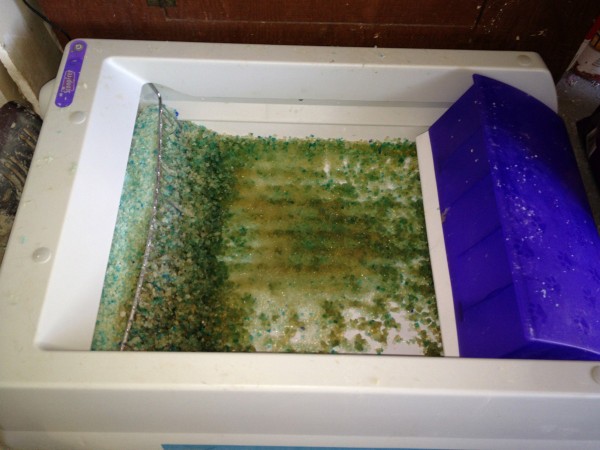
How it works: Unlike the other boxes, the Simply Clean doesn’t have a motion sensor or discrete cleaning cycles. You’re going to have to record this information yourself, too, since there’s no accompanying app.īest for: Cats who like open or closed boxes, and owners who don’t mind repurchasing plastic trays (or buying a reusable one separately), and who want a cheaper alternative to the Litter-Robot. (There is an option to buy a reusable tray for an additional $50, however.) The cycle counter lets you know how frequently your cat is using the box, but you’ll have to manually reset the counter each day (or at the end of whatever time period you want to track). The box worked great for controlling odor.Ĭons: There’s no permanent base, just the disposable plastic trays, and that feels a little wasteful.

Even though the instructions suggest using ScoopFree’s crystal litter, I still used the litter my cat is used to, and it worked just fine. Compared to the Litter-Robot, ScoopFree isn’t quite as loud and didn’t seem to scare Lovey, who was basically indifferent to the machine while it was cleaning. Pros: This litter box comes with an attachable hood, so it works for cats (or owners) who prefer open or closed boxes. A digital counter (that you can reset manually) displays how many clean cycles have been run. The bottom of the box is a disposable plastic tray that you’ll replace each time you change the litter. To clean, a rake combs through the box catching solid waste and clumps of litter, which it then deposits into the covered-up front section of the box that serves as a waste container. How it works: Like the Litter-Robot, the ScoopFree box has a motion sensor, which you can set to start the cleaning cycle 5, 10, or 20 minutes after your cat leaves the box. Finally, at $499 it’s very expensive for a litter box.īest for: Cats who are fine with enclosed litter boxes and are able to reach the entrance, and owners who want an app to track their pet’s bathroom habits. Also, the entrance to the box is a few inches off the ground, so it’s not ideal for kittens or older cats with mobility issues. Each time it went off, she’d stare at it with wide-eyed shock from across the bathroom, and it took her a few days to realize it wouldn’t start moving while she’s inside. The loud sound of the cleaning cycle was also a bit jarring for her. Emptying the box is easy, too: Just press a button and the box runs a normal cycle, only instead of sifting litter through the filter, it pushes all of it into the waste bin.Ĭons: Cats used to an open box (or even a standard enclosed one) will probably be intimidated at first. I loved being able to use the app to see how frequently my cat was using the box. The regular cleaning cycles kept odor under control and the litter looking clean.

Pros: Although it might take a while for your cat to adjust to this unique box (more on that below), this was the most human-friendly litter box I tried in terms of overall cleanliness and ease of use. The Connect version of the Litter-Robot links up to a smartphone app that notifies you when your cat uses the box and when it’s time to empty the waste compartment, tracks daily cleaning cycles so you can see patterns developing (like if your cat starts going to the bathroom more frequently which could be a sign of illness), and even lets you control the box remotely. There’s also the option to select an eight-hour window for “sleep mode” during which the box won’t run (helpful if you sleep nearby), and you can lock out the control buttons on the front so curious kittens won’t accidentally change the settings.

It uses a motion sensor to detect when your cat’s inside the box, and you can choose for the cleaning cycle to start 3, 7, or 15 minutes after your cat exits. Solid waste and clumps fall down into a drawer underneath the box and the rest filters back inside. How it works: Easily the most high-tech of the three boxes I tried, the Litter-Robot is a space-age-looking, egg-shaped container that flips upside down to sift litter through a filter.


 0 kommentar(er)
0 kommentar(er)
